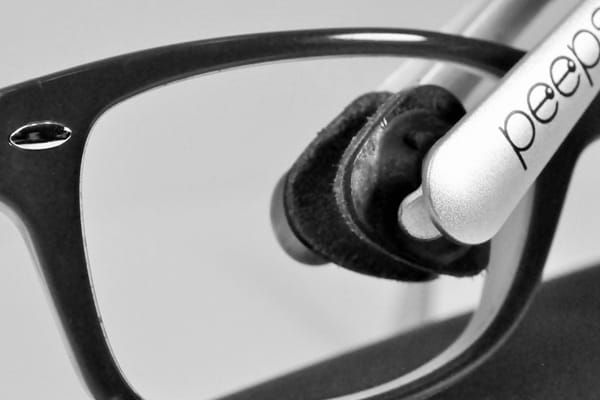‘No legitimate dyeing unit in Tirupur is knowingly violating pollution norms’
tnn | Sep 27, 2017, 00:44 ISTAs pressure mounts from environment groups and the public over water pollution by dyeing units, the Dyers Association of Tirupur formed an eight-member committee to inspect all its member units to find if they are breaching government pollution norms. The action comes after the government sealed 23 dyeing units amid foam formation in the Noyyal river, sparking a debate on water pollution by the industry. In a chat with R K Rajasekaran, the association president S Nagarajan strongly defended the dyeing units.
Are the dyeing units in Tirupur following all the pollution norms laid down by the Supreme Court?
None of the member units of the Dyers Association of Tirupur is violating the norms knowingly or wantonly. At the same time, I cannot say that industrial effluents are not at all discharged into water bodies or open grounds. Unlicensed units or micro-level units (button and zip dyeing units) might have violated the norms. Also, sometimes pipelines carrying effluents from dyeing units to common effluent treatment plants (CETPs) get damaged resulting in leakage.
The Tamil Nadu Pollution Control Board has sealed a CETP and 23 dyeing units for discharging effluents into the Noyyal. Are these violations the tip of the iceberg?
As per our calculation, 405 dyeing units, all registered with DAT, and their allied ETPs are treating 10 crore litres of effluents every day. But the water flow in the Noyyal is only around 4 crore to 5 crore litres. So we cannot assume that there is large scale discharge of effluents into the Noyyal. The river water's total dissolved salt (TDS) content is only around 2000-2500 PPM, an indication that there is no effleuent discharge.
State Environmental Minister K C Karuppannan said the reason for foam formation in Noyyal was due to discharge of soapwater from households. Do you agree?
He was absolutely right. Sewage is let into the Noyyal right from Perur in Coimbatore. The heavy downpour created turbulence and it resulted in the foam formation. Such foam can be seen throughout the year at a barrage near Ondipudur. A similar phenomenon was witnessed in a lake near Bengaluru, where no dyeing units function. Moreover, if the effluents were claimed to be the reason behind it at Noyyal, the TDS levels would have shot up. But TDS levels were low.
There are allegations that several dyeing units discharge chemical effluents into unused bore wells, rather than sending them to CETPs?
We do not know about such (gross environmental violation) but some unlicensed units might be doing it. Whenever we come to know of such practices, we complain to the TNPCB. Even when some of our association members were found violating Zero Liquid Discharge (ZLD) norms accidentally, we have recommended appropriate action against them. We consider such units as our 'enemies' because they force the other units to compete on unequal ground.
Huge expenditure for safe discharge of effluents is one of the reasons for dyeing units resorting to illegal discharge. Has the cost come down over the years?
Yes. Earlier, the cost for treating a litre of effluents was 35-40 paise. But now many CETPs which perform more than 70% of their capacities have been able to treat coloured water for 20-25 p per liter. But many CETPs and IETPs have been performing only around 40% of their capacities, so the cost remains around 35 p per litre. Our association has also planned to send samples for mixed salts (consists of sodium sulphate, sodium chloride and other chemicals), which are found in the effluents, to the Central Salt and Marine Chemical Research Institute to find how they could be reused. Once the remedy is found, it will make the treatment cost zero, which is our association's moto.
Of late, awareness on environmental conservation has increased. What are you planning to do to face the challenges?
We have settled a compensation of Rs 83 crore to the affected farmers as directed by the Madras high court. We have also deposited Rs 8 crore to the state government for cleaning the river, but it has not been spent yet. DAT has also formed a eight-member committee to inspect all their member units to find if they are breaching government pollution norms.
Are the dyeing units in Tirupur following all the pollution norms laid down by the Supreme Court?
None of the member units of the Dyers Association of Tirupur is violating the norms knowingly or wantonly. At the same time, I cannot say that industrial effluents are not at all discharged into water bodies or open grounds. Unlicensed units or micro-level units (button and zip dyeing units) might have violated the norms. Also, sometimes pipelines carrying effluents from dyeing units to common effluent treatment plants (CETPs) get damaged resulting in leakage.
The Tamil Nadu Pollution Control Board has sealed a CETP and 23 dyeing units for discharging effluents into the Noyyal. Are these violations the tip of the iceberg?
As per our calculation, 405 dyeing units, all registered with DAT, and their allied ETPs are treating 10 crore litres of effluents every day. But the water flow in the Noyyal is only around 4 crore to 5 crore litres. So we cannot assume that there is large scale discharge of effluents into the Noyyal. The river water's total dissolved salt (TDS) content is only around 2000-2500 PPM, an indication that there is no effleuent discharge.
State Environmental Minister K C Karuppannan said the reason for foam formation in Noyyal was due to discharge of soapwater from households. Do you agree?
He was absolutely right. Sewage is let into the Noyyal right from Perur in Coimbatore. The heavy downpour created turbulence and it resulted in the foam formation. Such foam can be seen throughout the year at a barrage near Ondipudur. A similar phenomenon was witnessed in a lake near Bengaluru, where no dyeing units function. Moreover, if the effluents were claimed to be the reason behind it at Noyyal, the TDS levels would have shot up. But TDS levels were low.
There are allegations that several dyeing units discharge chemical effluents into unused bore wells, rather than sending them to CETPs?
We do not know about such (gross environmental violation) but some unlicensed units might be doing it. Whenever we come to know of such practices, we complain to the TNPCB. Even when some of our association members were found violating Zero Liquid Discharge (ZLD) norms accidentally, we have recommended appropriate action against them. We consider such units as our 'enemies' because they force the other units to compete on unequal ground.
Huge expenditure for safe discharge of effluents is one of the reasons for dyeing units resorting to illegal discharge. Has the cost come down over the years?
Yes. Earlier, the cost for treating a litre of effluents was 35-40 paise. But now many CETPs which perform more than 70% of their capacities have been able to treat coloured water for 20-25 p per liter. But many CETPs and IETPs have been performing only around 40% of their capacities, so the cost remains around 35 p per litre. Our association has also planned to send samples for mixed salts (consists of sodium sulphate, sodium chloride and other chemicals), which are found in the effluents, to the Central Salt and Marine Chemical Research Institute to find how they could be reused. Once the remedy is found, it will make the treatment cost zero, which is our association's moto.
Of late, awareness on environmental conservation has increased. What are you planning to do to face the challenges?
We have settled a compensation of Rs 83 crore to the affected farmers as directed by the Madras high court. We have also deposited Rs 8 crore to the state government for cleaning the river, but it has not been spent yet. DAT has also formed a eight-member committee to inspect all their member units to find if they are breaching government pollution norms.
Get latest news & live updates on the go on your pc with News App. Download The Times of India news app for your device.
From around the web
More from The Times of India
From the Web
More From The Times of India

Unbelievable, 45 Colleges Ranked based on Girl's Beauty
Fropky.com
Bollywood star kids who could turn into great Heroines.
CRITICSUNION93% of Americans won't know all of these history facts
Topix Stars
People with Glasses are Going Wild for This Carbon Molecul..
Peeps Carbon Technology
Immigration Agents Pull Woman with Brain Tumor from Hospital
MedPage Today






































All Comments ()+^ Back to Top
Refrain from posting comments that are obscene, defamatory or inflammatory, and do not indulge in personal attacks, name calling or inciting hatred against any community. Help us delete comments that do not follow these guidelines by marking them offensive. Let's work together to keep the conversation civil.
HIDE